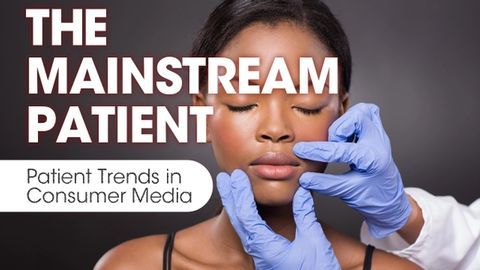- Acne
- Actinic Keratosis
- Aesthetics
- Alopecia
- Atopic Dermatitis
- Buy-and-Bill
- COVID-19
- Case-Based Roundtable
- Chronic Hand Eczema
- Drug Watch
- Eczema
- General Dermatology
- Hidradenitis Suppurativa
- Melasma
- NP and PA
- Pediatric Dermatology
- Pigmentary Disorders
- Practice Management
- Precision Medicine and Biologics
- Prurigo Nodularis
- Psoriasis
- Psoriatic Arthritis
- Rare Disease
- Rosacea
- Skin Cancer
- Vitiligo
- Wound Care
Publication
Article
Dermatology Times
Solving Pierced Earring Challenges
Author(s):
In this month's Cosmetic Conundrums column, Dermatology Times Chief Medical Editor Zoe Diana Draelos, MD, discusses how to solve common challenges associated with pierced earrings.
Q: What is the best way to insert a difficult pierced earring?
Piercing of the ears and other body areas has seen a tremendous resurgence in the United States and around the world. It is a form of personal expression and body adornment among many individuals wishing to wear piercing jewelry for a variety of social and emotional reasons. Pierced ears are the most common; however, recommendations for pierced-ear care can be generalized to other body piercings.
It can become difficult to insert a pierced earring for many reasons. The most common cause is simply increased friction between the ear hole and the earring. This is most easily remedied by putting petroleum jelly on the earring post and then inserting it into the ear. The petroleum jelly will lubricate the earring to reduce friction. Forcing the earring into the hole can damage the skin, creating epidermoid cysts within the earlobe that can be painful and a source of foul- smelling drainage. This occurs when a small piece of viable skin is forced beneath the skin surface, creating a cyst. Lubricating the earring with petroleum jelly is especially important in patients with earlobe cysts.
The second most common problem causing earring-insertion difficulty is a keratin plug in the earring hole from skin debris. The skin lining the earring hole continues to slough corneocytes, which can create a keratin plug. It is best to remove the plug by pushing the earring through the hole backward (pushing the earring post from the posterior earlobe to the anterior earlobe). This will remove the plug and allow earring insertion to proceed smoothly.
Q: Can you leave in pierced earrings while sleeping?
It is not advisable to sleep with pierced earrings in your ears, although many women prefer not to remove their earrings at night. The earlobe is a thin piece of skin and easily can tear if the earring becomes caught and pulled on hair or bedclothes at night. Stud- type earrings are less prone to earlobe damage than longer dangling earrings or larger hoops. It is recommended that women who prefer to wear earrings continually select a small stud for safety.
Q: How can you improve earring wear in mature individuals?
Many mature individuals discontinue wearing pierced earrings because the earlobes become thinned with age. This is due to loss of subcutaneous fat in the earlobes. Subcutaneous fat loss occurs over the entire body, but it may be most noticeable in the earlobes because the floppy lobes can no longer support an earring and tend to flip forward.
This problem can be remedied easily. One solution is to purchase larger-diameter pierced-earring stud backs that will support the earlobe. These backs can be purchased from a jeweler and worn with all stud earrings. Another option is to put a plastic disk over the posterior earlobe around the earring post, over which the back is pushed to keep the plastic disk in place. Both solutions will allow the earlobe to remain flat.
A second solution is to inject hyaluronic acid filler into the earlobe. The needle is placed into the lower rim of the earlobe, and hyaluronic acid can be injected into the center of the earlobe by using a fanning motion to fill the entire earlobe, taking care to preserve the earlobe shape. The filler should be massaged to be sure that no lumps are present and that an even, thin layer of filler has been deposited over the entire ear lobe. Since earlobes do not move, the hyaluronic acid has a long duration (9-12 months).
For most patients, it is not necessary to inject a full syringe. When injecting into other areas of the face, save 0.5 cc and inject half into each earlobe for an excellent reconstruction result. The filler will make the earlobe thicker and less likely to tear from earring use while also eliminating earlobe wrinkles from redundant skin.






















